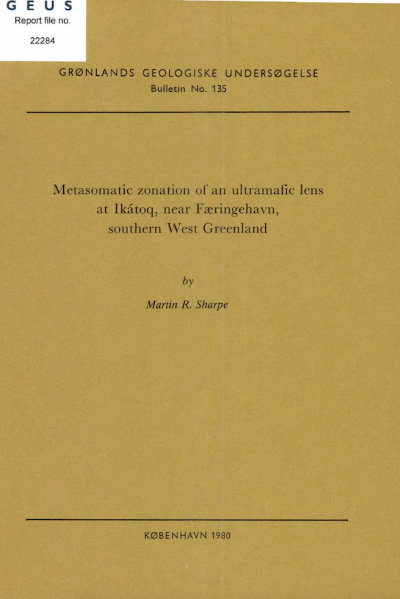Metasomatic zonation of an ultramafic lens at Ikátoq, near Færingehavn, southern West Greenland
DOI:
https://doi.org/10.34194/bullggu.v135.6677Abstract
The Ikátoq zoned ultramafic lens occurs as an elliptical body in Archaean gneisses and amphibolites to the south of Færingehavn, southern West Greenland. From the unaltered serpentinite core to the contact with the surrounding gneisses five zones were distinguished: serpentinite (5), talc-carbonate rock (4), tale (3), amphibole (2) and chlorite (1): their interrelationships are discussed in the light of the theory of zoning. It is shown that these five main lithological types developed from a common parent rock under the inf1uence of low temperature metamorphism as a process of steatisation – the outer chlorite zone representing altered host rocks, whilst the inner tale, tale-carbonate and serpentinite shells represent changed serpentine core. The original junction between the two parent rocks lies in the amphibole zone. The growth process of the zones is discussed and evidence concerning these mechanisms is presented. Estimates of bulk transport and ion migration during the alteration are developed from the chemical analyses, based on whole-rock formulas and equivalent volumes, using ideal-mineral reaction stoichiometry. The system was open to migrating components, and it is shown that the body lost Mg to the gneisses, which in turn supplied some Ca and K to the reacting system. It is likely that CO2 and H2O were permanently in excess. A volume contraction of approximately 6 per cent during the steatisation process is postulated.
Downloads
Published
Issue
Section
License
This article is distributed under a CC-BY 4.0 licence, permitting free redistribution and reproduction for any purpose, even commercial, provided proper citation of the original work. Author(s) retain copyright over the article contents.


